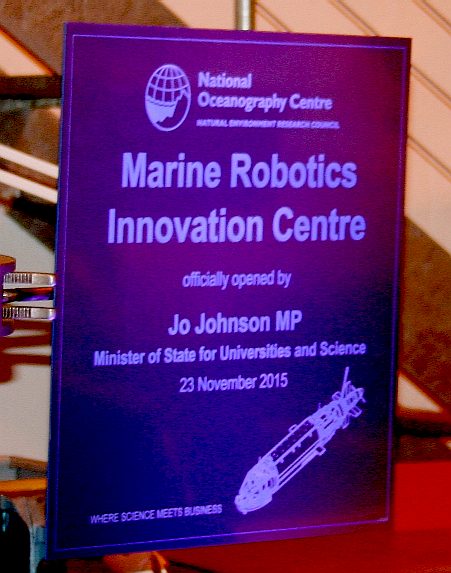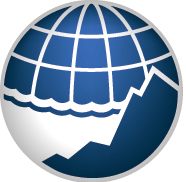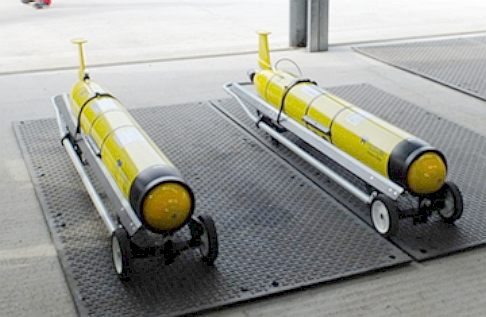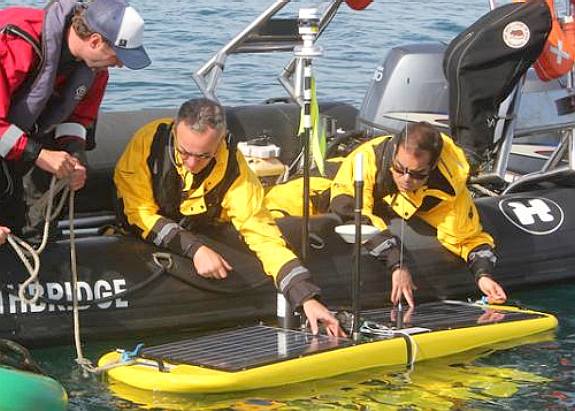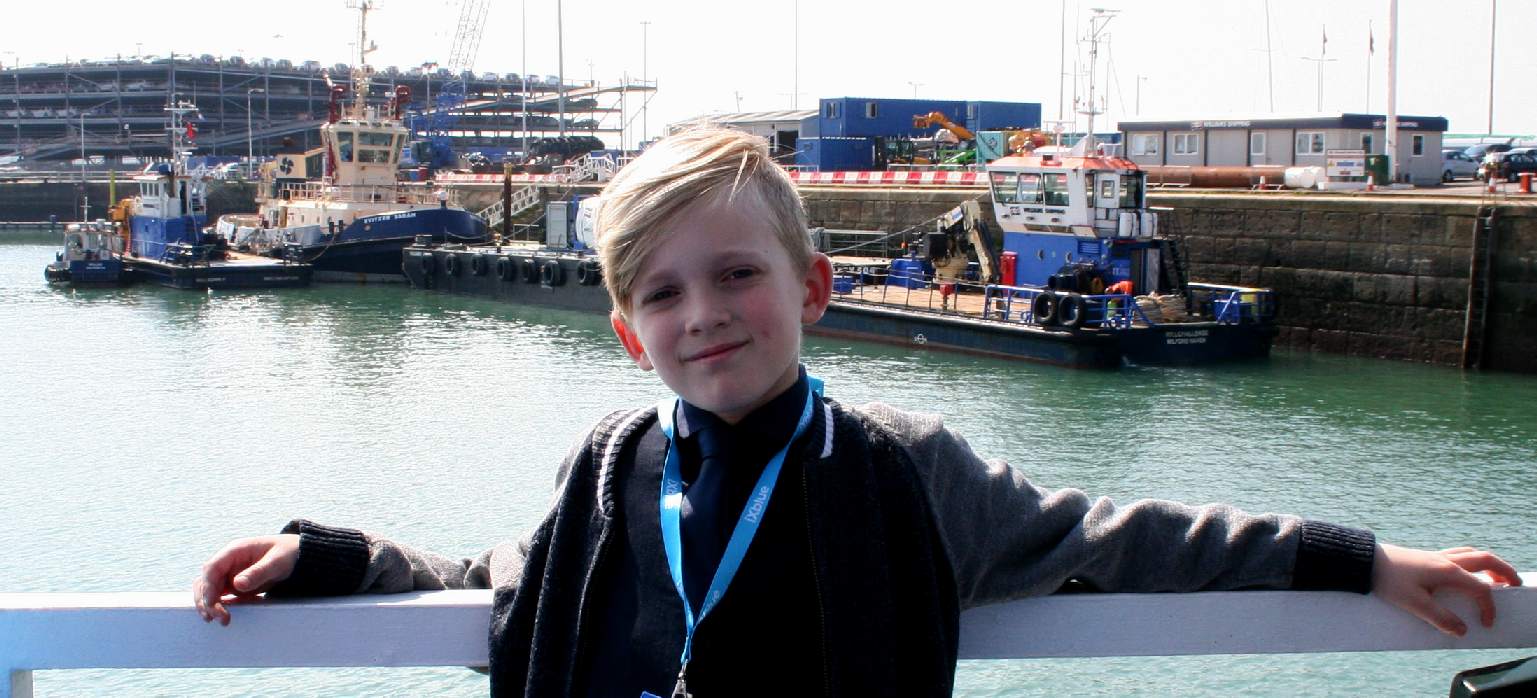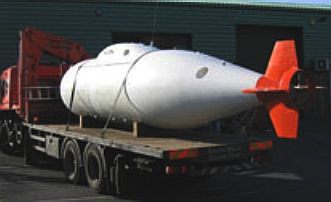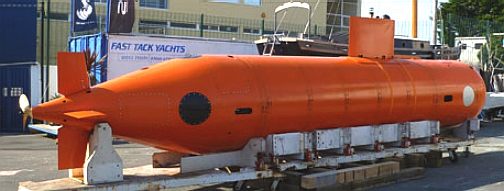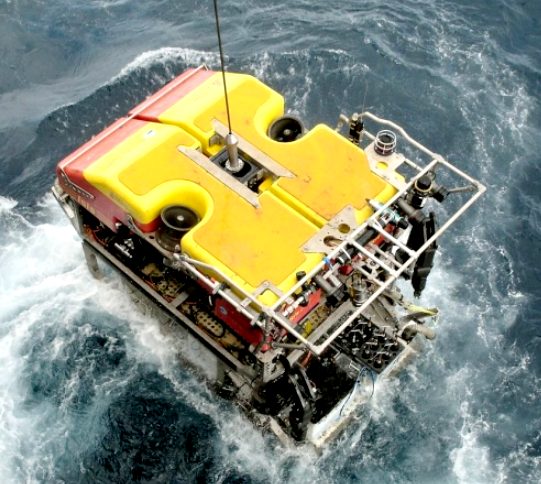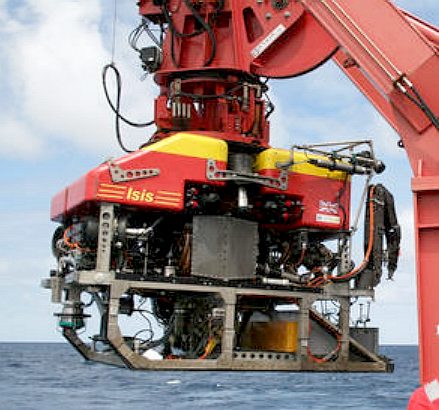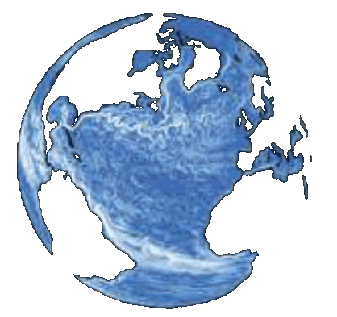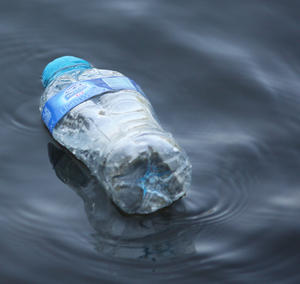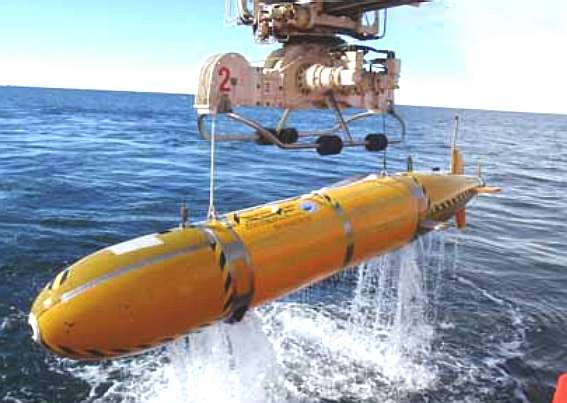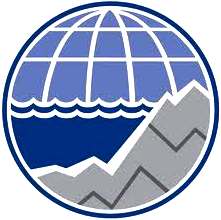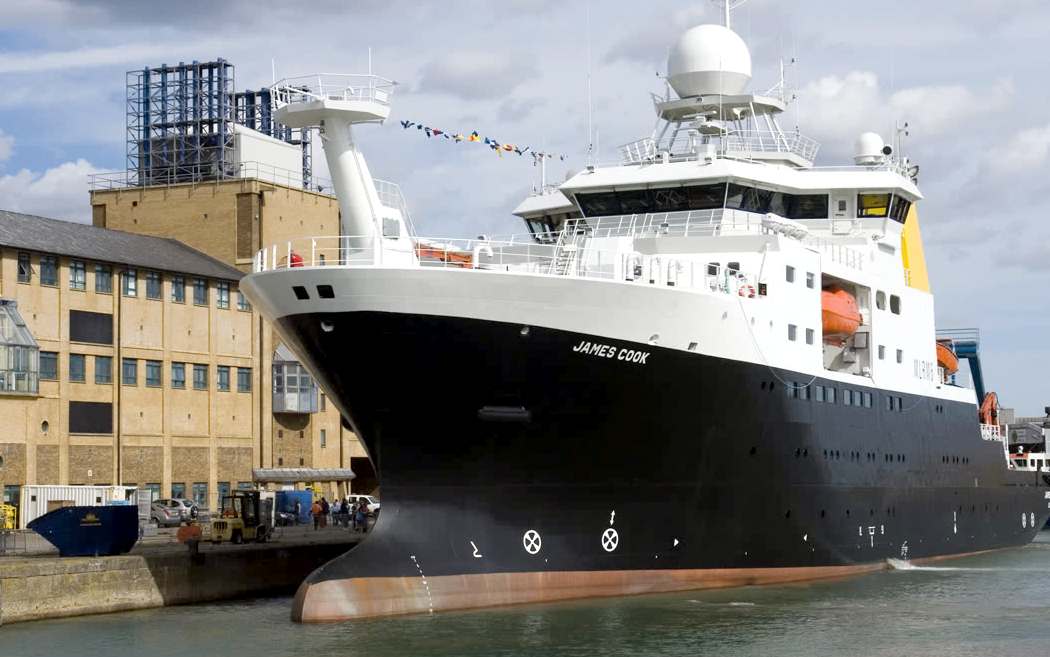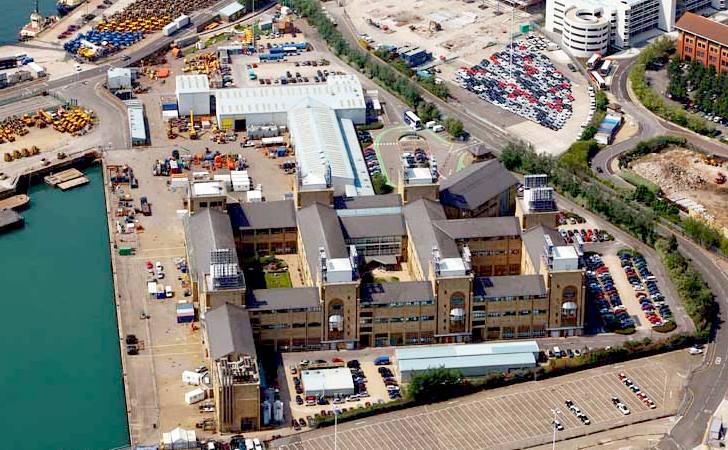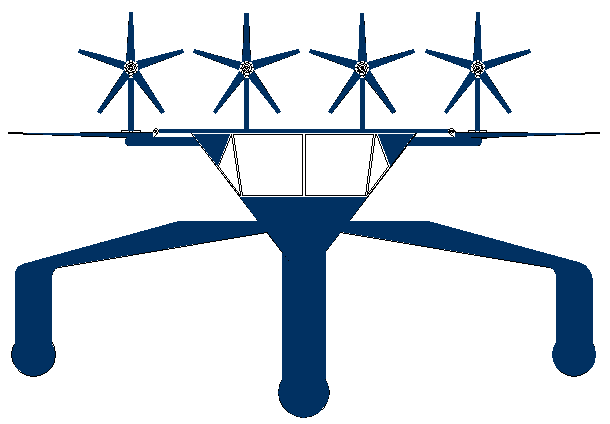|
N. O. C. National Oceanography Centre, Southampton, UK
|
|||
|
NOC OPENING CEREMONY PLAQUE - Jo Johnson gave a talk to the crowd and then this commemorative plaque was ceremoniously unveiled as he officially opened the Marine Robotics Innovation Centre.
MARINE TECHNOLOGY NEWS - DECEMBER 3 2014
Stage two of the NOC coordinated project to gather information on ocean processes and marine life using the largest fleet (so far) of marine robots has just reached its conclusion.
In the latest phase of the project, three unmanned surface vehicles were used to track fish carrying acoustic ‘pingers’ off the Devon coast. About 85 fish, including rays, sole and plaice, were tagged and released by scientists from the Marine Biological Association (MBA), with the aim of understanding how these fish use Marine Protected Areas. The roaming robotic vehicles carried acoustic receivers and worked alongside a series of fixed receivers on the seabed in order to track fish movements inside and outside of the protected sites.
The surface vehicles were also carrying camera systems that successfully imaged a variety of marine wildlife, including porpoises and gannets. It is the first time images of marine life have been captured by NOC’s robotic vehicles operating far from land and demonstrates huge potential for surveying parts of the ocean that are rarely visited by research ships.
OCEAN BUSINESS - Ryan soaks up the atmosphere on the waterside at the NOC during his visit to the marine exhibition in April 2017. Ryan is learning about boats and robots with the Cleaner Oceans Foundation, as they develop the AmphiMax™ and SeaVax™ ocean cleaning system.
ATLANTOS - NOV 25 2014
NOVEMBER 4 2014
Scientists from the Marine Biological Association (MBA) and engineers from the National Oceanography Centre (NOC) are working together on this pioneering project.
LEFT - The C-Enduro from ASV Global. We liked the look of the wind turbine, but noted from the launch and Youtube footage that the Ampair unit rarely seems to turn in anger and the support frame shades the solar panels. RIGHT - The AutoNaut from MOST is another of the interesting craft joined in a mission to track fish in the locality. What is interesting about all of these boats is that the navigation equipment is more than capable of steering the craft from point to point in fleet mode and report position and other data to the operators. We note though that none of these vessels are COLREGS compliant, though the smaller boats may be considered exempt - as they are unlikely to cause significant damage to other ocean users - the C-Enduro is large enough to need to comply, yet is not equipped to do so.
Dr Stephen Cotterell, of the Marine Biological Association, is leading the project and commented “This technology will give us a new dimension in our understanding of fish movements, residency and migrations in and around the marine protected areas off Plymouth. Understanding how fish use MPAs will be vital in understanding the value of these management tools to conserve fish stocks. One of the aims of the EU Marine Strategy Framework Directive is achieving sustainable
fisheries, through an ecologically coherent network of MPAs. We just don’t know enough yet about how effective MPAs are for mobile species. With this work we aim to get somewhere closer”.
One of the unlucky plaice to be tagged for NOC's experimental fish trail
Dr Maaten Furlong, Head of the NOC’s Marine Autonomous Robotics Systems group
said of Phase 2: "This second phase builds on the success of Phase 1 and allows us to test the vehicle fleet in coastal waters. Using autonomous surface vehicles in combination with fixed seabed assets significantly enhances the scientific value of the system.”
MSUBS - 28 OCT 2014
MSubs Ltd, a supplier of manned and unmanned underwater submersibles for both military and commercial users, was selected to be a supplier to the Marine Autonomous and Robotic Systems (MARS) group at the National Oceanography Centre UK, for the provision of unmanned underwater vehicles, equipment, services and support.
LEFT - S201 - S201 is an 8.9 tonne vehicle intended for 48hr operation at depths up to 305m. This project is an example of our rapid prototyping capabilities. From outline specification to launch took just 14 months. Dived performance is maximised by attention to streamlining of the outer hull and by the use of advanced motor technology to directly drive the main propeller. Surface running is possible with one crewmember on deck and hatch closed, at speeds up to 6kn in modest sea states, but the vessel's primary mode of deployment is by crane-in. RIGHT - MUSTL
The MARS group is based at the National Oceanography Centre in Southampton, UK, under the auspices of the National Environmental Research Council
(NERC). The MARS group exists to provide and to operate from their equipment pool of commercial underwater and surface vehicles for the British oceanographic science community and other qualifying organisations on short and long term basis and are operated by MARS and other trained NERC personnel.
M Subs Ltd
Kevin Forshaw - started engaging in technology transfer for the maritime sector over 15 years ago when he established a Marine Thematic Group within the EC Innovation Relay Centre. He has since worked for 4 Universities, including Southampton, where he headed up Industry Engagement for the Southampton Marine and Maritime Institute. During this period, Kevin has established many industry / University collaborative research projects developing new technologies for maritime companies, that have leveraged £ millions of public funded support. Kevin is now Head of Enterprise at the UK National Oceanography Centre where he is heading up engagement with Marine Autonomous Systems related companies for the centre's Marine Autonomy and Robotic Systems Innovation Centre: MARSIC.
The Marine Autonomous and Robotic Systems (MARS) research group at the UK National Oceanographic Centre (NOC), has been at the forefront of AUV design and development for marine science applications for over 20 years. MARS has developed three types of AUVs in it's Autosub range, and its vehicles have been taken to many exotic areas, including Greenland and
Antarctica, where it investigated the dark mysterious ice caverns under floating ice shelves, and the deep
Caribbean, where it helped discover the world's deepest 'black smoker' hydrothermal vent.
NOC RECRUITING JULY 2014
• AUV Lead Mechanical Engineer/Operations Manager - You will oversee the operational aspects of the AUV deployments and also act as the Lead Mechanical Engineer for the team.
• AUV Mechanical Engineer - Your work will include mechanical development of the AUVs and the ship and shore based infrastructure to operate these vehicles. The project topics include pressure vessels, basic naval architecture and integration of scientific sensors.
The full particulars for all the above posts and details of how to apply may be found at http://noc.ac.uk/jobs
For the first time ever, researchers discovered a whale skeleton on the sea floor near Antarctica using the ISIS. Thanks to advancements made with recording technology, the group from Southampton University was also able to capture nine new deep-sea species surviving off the skeletal remains. The planet's largest animals are also a part of the ecology of the very deep ocean, providing a rich habitat of food and shelter for deep sea animals for many years after their death. When a whale dies and falls to the sea floor, scavengers come in and quickly strip the carcass of its flesh. After that, organisms come in and colonize the skeleton, draining it of any remaining nutrients. Afterwards, bacteria come in and break down the remaining fats store in whale bones before finally, organisms come in and digest what remains of the whale bone. The ISIS ROV is a work-class vehicle capable of descending to a depth of 6500m. The underwater vehicle is supported with a containerised control room, workshop and spares storage, with a Launch and Recovery System (LARS). Suitably sized and dynamically positioned (DP) ships of opportunity allow the system to be freighted and operated around the world.
NOC HISTORY
Wholly owned by the Natural Environment Research Council
(NERC), the NOC was formed by bringing together the NERC-managed activity at Liverpool’s Proudman Oceanographic Laboratory and the National Oceanography Centre, Southampton, creating the UK’s leading institution for sea level science, coastal and deep ocean research and technology development. The new centre works in close partnership with institutions across the UK marine science community.
COMPUTER SIMULATION - Dr Katya Popova, an ocean modeller at the NOC held workshops at the Ocean Business event in April 2015. She showed how the latest advances in ocean circulation computer modelling are providing increased detail for environmental consultants – including how new sea routes could appear in the Arctic in the future and how plastic and oil ocean waste distribution might be predicted. This could be an invaluable tool for projects like the SeaVax ocean cleaning robots if allied to the proposed SeaNet fleet operations. At the time of writing SeaVax is a 'proof of concept' model, with the team now looking to design and build a full size prototype.
Autosub LR pressure domes, battery and sonar
MARINE MEASUREMENT FORUM, 28TH NOVEMBER 2013, NATIONAL OCEANOGRAPHY CENTRE, SOUTHAMPTON, UK Xylem Analytics UK were pleased to announce that REGISTRATION IS WAS OPEN for the 53rd Marine Measurement Forum held on Thursday 28th November 2013 at the National Oceanography Centre, Southampton (NOCS).
The format for the day
was a series of 15-20 minute talks on topics ranging from scientific research, instrumentation or survey projects etc. In a break from tradition and to make the most of the fantastic facilities at NOC, a tour of the Marine Autonomous and
Robotic Systems (MARS) facilities, and the British Ocean Sediment Core Research Facility (BOSCORF) will be provided. Both of these offer a fascinating insight into some of the work performed at NOC.
However, there is still time to send in a request to present by emailing david.goldsmith@xyleminc.com
Please provide a provisional title for your presentation and a short summary of the proposed topic(s). Nearer the event we will compile the final list of speakers and notify you if you have been selected. The overall aim is to provide delegates with a varied and balanced series of presentations, so selection cannot simply be on a first-come, first-served basis.
PARTNERS
The NOC’s partners include the University of Southampton, whose Ocean and Earth Science academic unit is co-located at the NOC’s dockside headquarters, home to around 520 research scientists, engineers and technicians, ship operations and support staff, as well as around 700 undergraduate and postgraduate students. The University of Liverpool is the NOC’s other hosting partner and postgraduate students are taught in a research-led environment in NOC's Joseph Proudman Building on the university's campus.
The NOC is responsible for managing UK marine science national capability. This includes provision of major facilities, programmes of sustained observing, survey, mapping, data management and other functions. The NOC also manages contracts placed by NERC with other organisations to provide some national capability functions. Such organisations are known as Delivery Partners and include:
Scottish Association for Marine Science Sir Alistair Hardy Foundation for Ocean Science (named after Alistair Hardy)
The centre is committed to international engagement and has developed a range of international partnerships through the International and Strategic Partnerships Office, including an alliance of Europe’s three principal oceanographic research institutions with Ifremer of France and IFM Geomar of Germany.
TONIGHT!
MARINE LIFE TALK – 7 June 2012 19:30pm - PLASTIC PLANET at the National Oceanography Centre in Southampton
- by Jennifer Durden –
INTERNATIONAL and STRATEGIC PARTNERSHIPS OFFICE
The International and Strategic Partnerships Office (ISPO) is part of NERC's National Marine Capability. ISPO works with the UK and international marine science community and a variety of marine and maritime partners in the private and government sector to improve dialogue and sustained interaction in an inclusive, impartial way.
ISPO provides the secretariat for Oceans 2025, the NERC marine centres' strategic research programme for 2007-2012, and also provides the NERC contribution to the secretariat for the UK Government's Marine Science Co-ordination Committee (MSCC).
The International and Strategic Partnerships Office is the NOC focus for international engagement and the development of international partnerships. We represent the UK marine science community at the European Science Foundation (ESF) Marine Board, and lead the UK's input to the Intergovernmental Oceanographic Commission (IOC). We host the CLIVAR international project office, part of the World Climate Research Programme.
Autosub recovery
CONTACTS
MARINE ACADEMIC INSTITUTIONS A-Z
Australian Maritime - British Ocean Data Centre - Geneve - Hawaii Renewable - NERC - Newcastle Naval NOC Oceanographic - Plymouth - Portsmouth - Queensland - Seoul Naval - SOTON Strathclyde
Marine - Sussex
- TU
Delft - USP South
Pacific - Webb
Institute
LOADSA MONEY - The National Oceanography Centre Southampton (NOCS) is a centre for research, teaching, and technology development in Ocean and Earth science. NOCS was created in 1995 jointly between the University of Southampton and the UK Natural Environment Research Council and is located within the port of Southampton at a purpose-built dockside campus with modern facilities. In 2010 the University and NERC components demerged, and the NERC-managed component became the National Oceanography Centre (NOC – with the Proudman Oceanographic Laboratory in Liverpool).
The two components of NOCS continue close collaboration through the jointly run Graduate School, shared research facilities and laboratories, complementary research groups, and many joint research grants and publications. The University component “Ocean and Earth Science, National Oceanography Centre Southampton”
(OES) is part of the Faculty of Natural and Environmental Sciences, (FNES). It was ranked 30th in the world for Earth and Marine Sciences by the QS World University Rankings in 2014.
LINKS & REFERENCE
http://auvac.org/community-information/community-news/view/935 Oceanology International OI China 2014 Conference Programme Remote Technology Underwater Kevin Forshaw NOC robot vehicles launched from Plymouth-on fish tracking mission http://www.metoffice.gov.uk/ http://www.royalnavy.mod.uk/ https://twitter.com/nocnews http://noc.ac.uk/news/robot-vehicles-launched-from-plymouth-morning-fish-tracking-mission http://noc.ac.uk/research-at-sea/nmfss/mars http://www.msubs.com/ http://www.xylemanalytics.co.uk/index.php http://www.amc.edu.au/ http://www.gavia.is/ http://www.strath.ac.uk/na-me/
PATENT PENDING - The big boy in ocean cleanups and research, Bluefish ZCC technology provides a means to act on information received during oceanographic surveys. Small autonomous marine survey craft are fine as far as collecting data is concerned, but useless in certain circumstances where useful work is required, without end effectors onboard that may be deployed in hands on fashion. An adapted ZCC would be capable of harvesting plastic from the 5 major ocean gyre garbage pools, that so far nobody seems to want to tackle.
By cutting the cost of oceanographic survey and speeding up data collection, we will learn more about the oceans, for which the Bluefish ZCC platform is the ideal robotic ocean workhorse.
BIOLOGICAL SAMPLING - A Bluefish ZCC can be manned or unmanned. It is a scientific work station. Depending on specification, this incredibly versatile design can be put to most uses, even collecting and transporting live samples, with a modified ROV dock - used as a capture and holding tank for marine life, instead of housing a dedicated submersible.
This ship uses no diesel fuel in the quest to monitor the oceans at relatively high cruising speeds of between 7-10 knots, 24/7 and 365 days a year. What makes all of this possible is the revolutionary energy harvesting system that provides a power to weight ratio of more than 3kW per ton, with up to 7kW per ton being attainable using more exotic materials. That gives oceanographers the power to do more.
OIL SPILLS - Dedicated versions of the Bluefish ZCC platform could be deployed as oil clean-up robots, to cope with disasters like the Deepwater Horizon.
PLASTIC OCEANS - Adapted ZCCs operating in SeaNet fashion, could form a fleet to clean up the oceans of harmful waste that is estimated to be some 269,000 tons in size across an area roughly the size of Texas.
ACIDIFICATION - ADRIATIC - ARCTIC - ATLANTIC - BALTIC - BAY BENGAL - BERING - CARIBBEAN - CORAL - EAST CHINA ENGLISH CH - GOC - GULF GUINEA - GULF MEXICO - INDIAN - IOC - IRC - MEDITERRANEAN - NORTH SEA - PACIFIC - PERSIAN GULF - SEA JAPAN STH
CHINA - PLASTIC
- PLANKTON - PLASTIC
OCEANS - SEA
LEVEL RISE - UNCLOS
- UNEP
WOC
- WWF AMAZON - BURIGANGA - CITARUM - CONGO - CUYAHOGA - GANGES - IRTYSH - JORDAN - LENA - MANTANZA-RIACHUELO MARILAO
- MEKONG - MISSISSIPPI - NIGER - NILE - PARANA - PASIG - SARNO - THAMES
- YANGTZE - YAMUNA - YELLOW
|
|||
|
This website is Copyright © 2017 Bluebird Marine Systems Ltd. The names Bluebird™, Bluefish™, Miss Ocean™, SeaNet™, SeaVax™ and the blue bird and fish in flight logos are trademarks. The color blue is an essential element of the marks. All other trademarks are hereby acknowledged.
|
